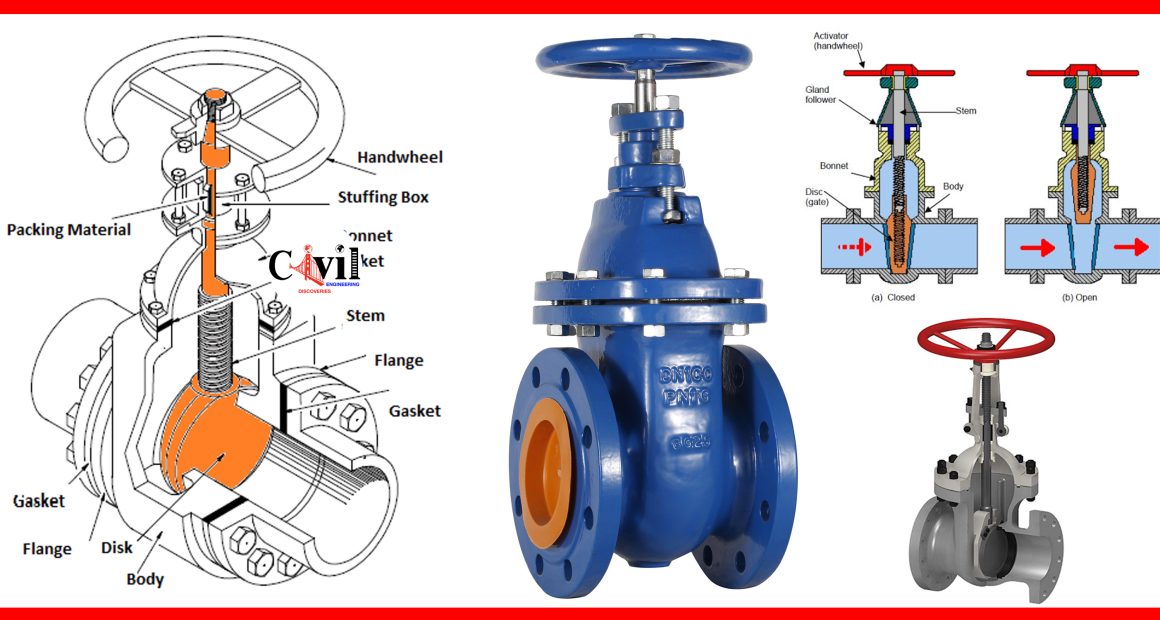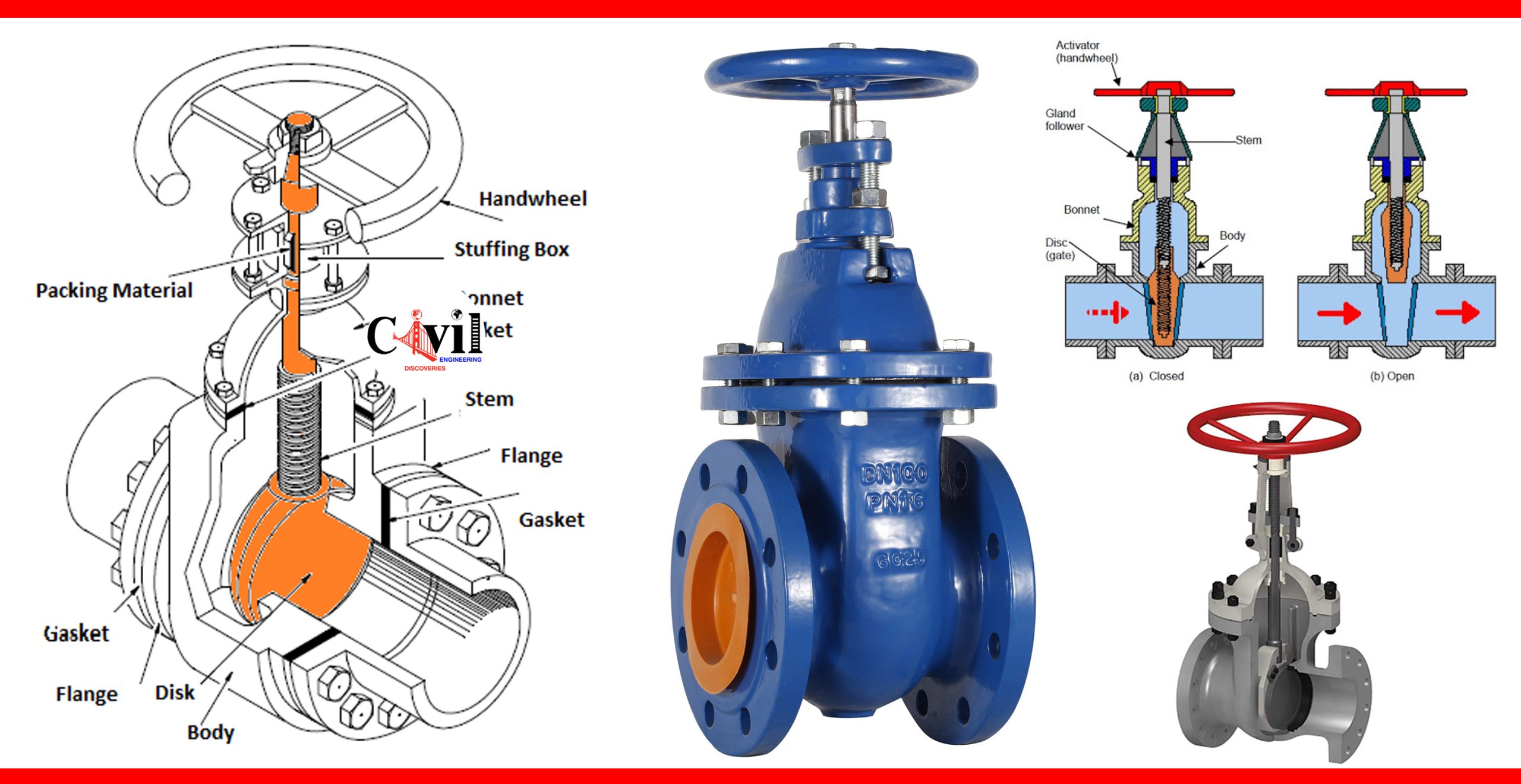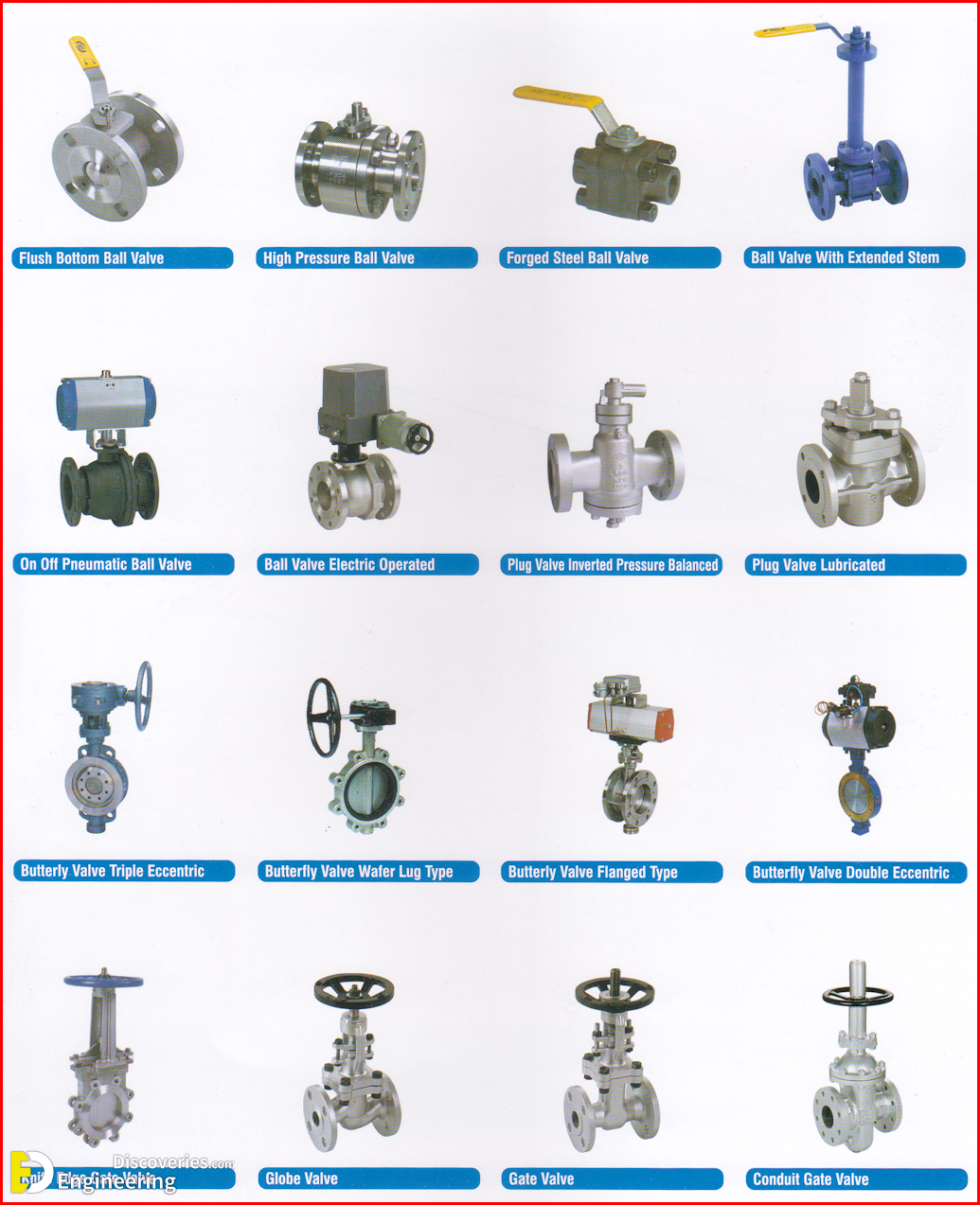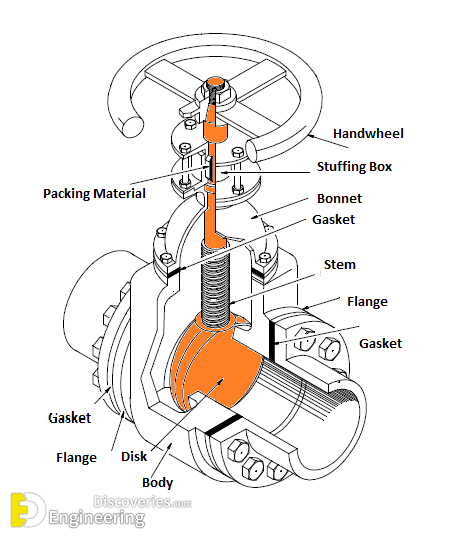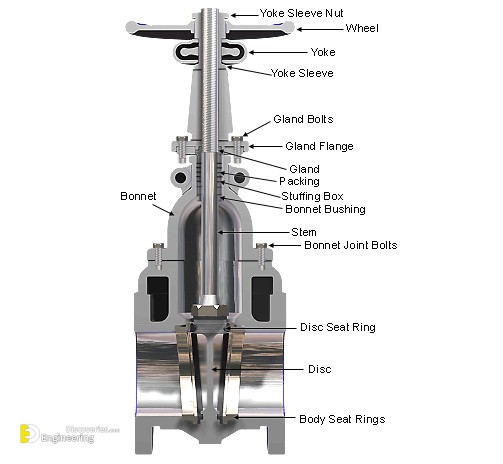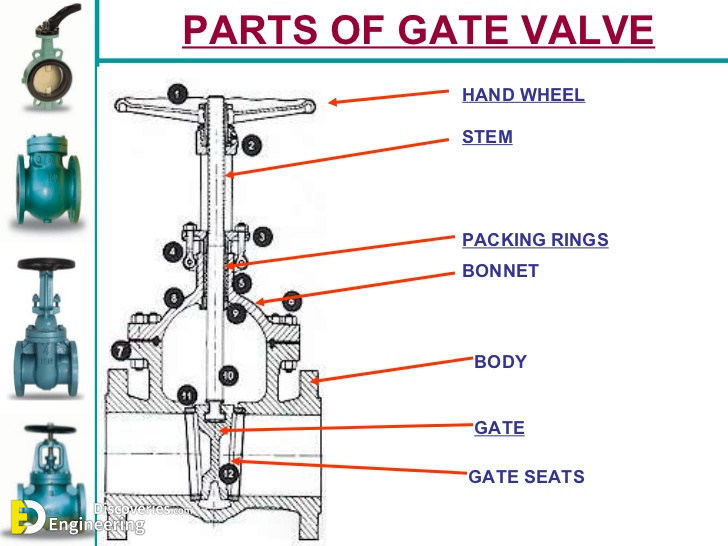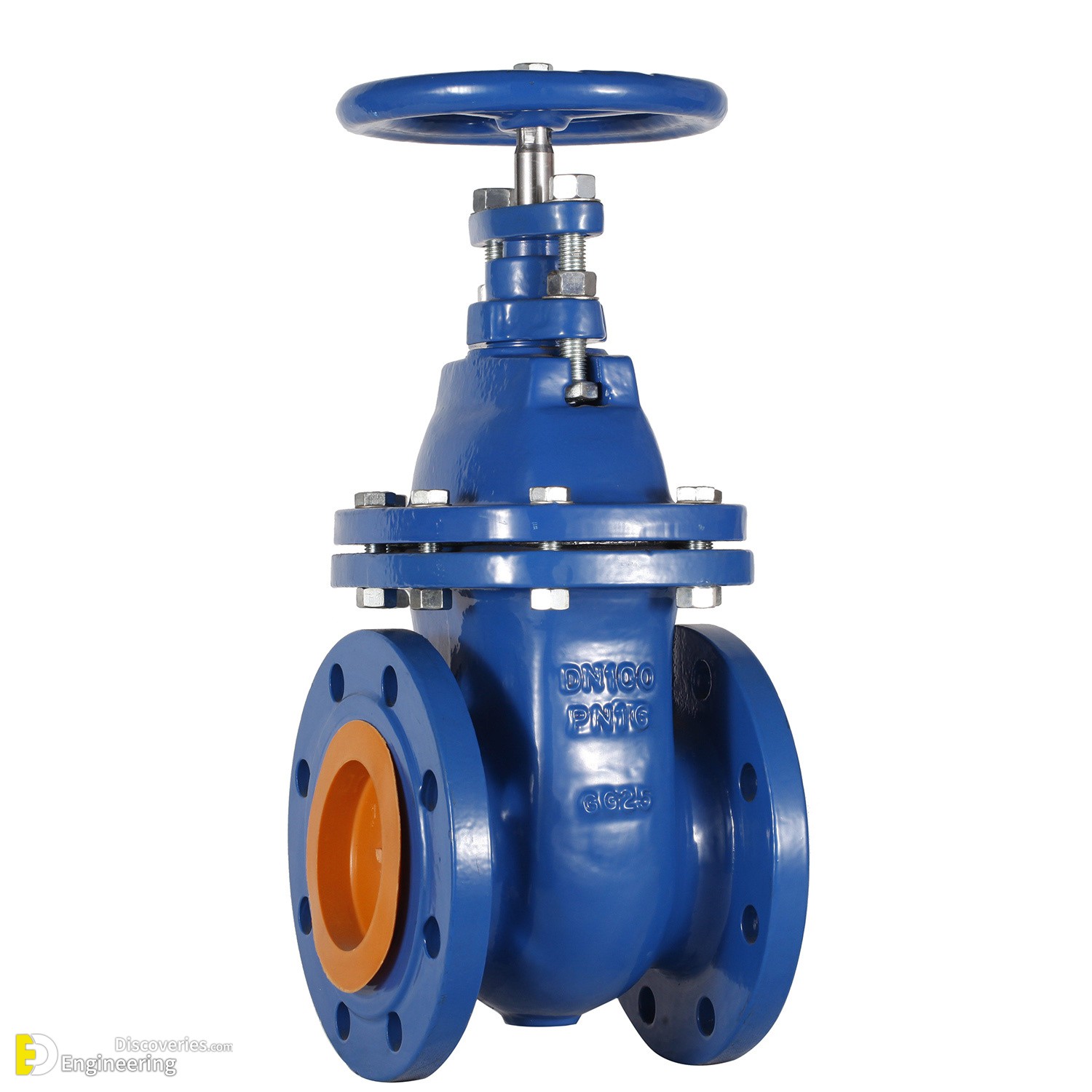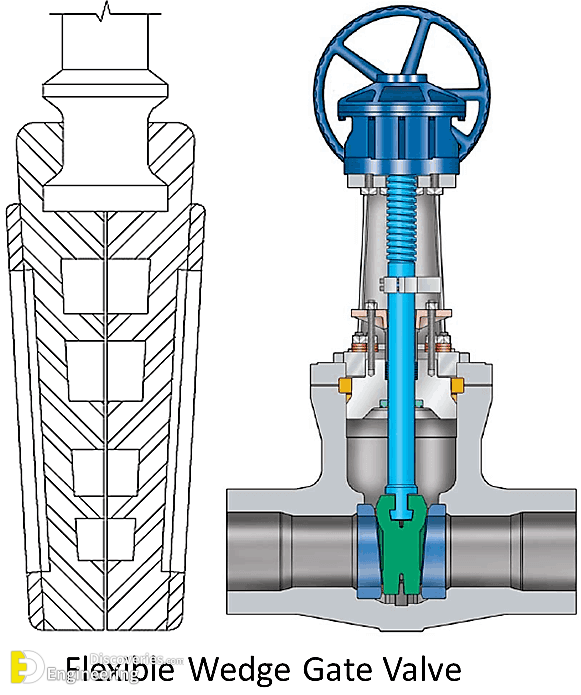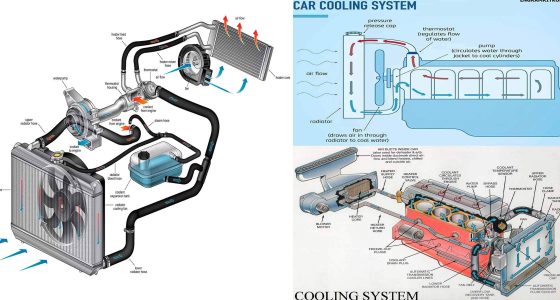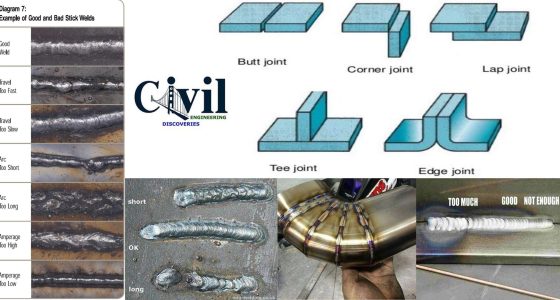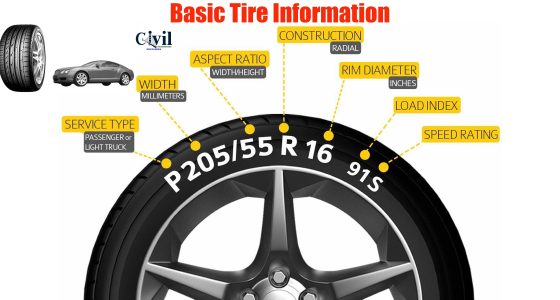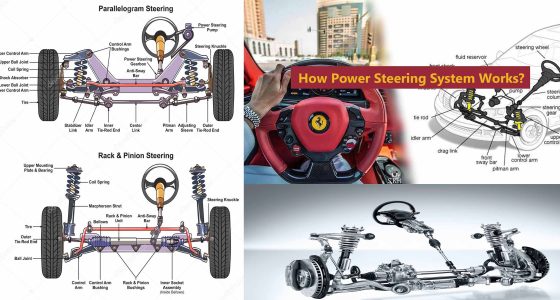A gate valve can be defined as a type of valve that used a gate or wedge type disk and the disk moves perpendicular to flow to start or stop the fluid flow in piping. A gate valve is the most common type of valve used in any process plant. It is a linear motion valve used to start or stop fluid flow. In service, these valves are either in a fully open or fully closed position. When the gate valve is fully open, the disk of a gate valve is completely removed from the flow. Therefore virtually no resistance to flow. Due to this very little pressure drops when fluid passes through a gate valve. To achieve proper sealing, when the valve is fully closed, 360° surface contact is required between disk and seats. Gate valves should not be used for regulation or throttling of flow because accurate control is not possible. The high velocity of the flow in the partially open valve may cause erosion of the disc and seating surfaces and also creates vibration and noise.
Gate Valve Parts
- The valve body is the primary part of the valve which holds everything together. Mostly it is connected to piping through flange and gasket. It is the pressure boundary of the valve.
- The valve bonnet is the second boundary of pressure. It is connected with a valve body with bolts or flange.
- The valve trim collectively stems, seat, and disk is known as valve trim. Valve performance is dependent on seat and disk arrangement.
- The seat and disk are the most important part of the gate valve. It contains a gate-type disk and seat which fits the disk tightly.
- The stem connects the actuator and disk in the gate valve. It opens and closes the disk and seat arrangement. Two types of stem are available one is rising which rises when we open the valve and the other is non-rising which has no verticle motion.
- Valve Actuator is a manual wheel that operates stem and disk arrangement.
Gate Valve Types
Now, we know about the basics of the gate valve and parts of the gate valve. In close condition, the fluid pressure is on the gate, and in the high-pressure condition, it causes valve failure. The Gate valve is used in many industries like pharmaceutical, Oil and Gas industry, and marine industries. Let’s talk about different types of gate valves.
1. Solid wedge gate valve
It is a very popular type of gate valve. It is useful for almost all materials. Here wedge-type disk is used and fitted on the seat. It is used for moderate pressure conditions but not useful for the high-pressure condition because it sticks due to high-pressure causes leakage. Sometimes due to thermal expansion seat does not open and gets jammed. This phenomenon is called thermal binding.
2. Parallel disk or Split gate valve
This type overcomes the problem of thermal binding due to its freedom of movement. Here two disks and seats are kept together by spring. It is used for low and medium-pressure applications.
3. Flexible wedge gate valve
It consists of a small cut on the disk which fits on the seat. Due to this cut, we get leakage-free alignment between seat and disk. It is used in steam applications.
4. Non-rising and rising gate valve
In the rising gate valve, the stem will go up when we open the gate valve and goes down on closing. In a non-rising valve, no verticle movement occurs. It is used when we have less space available.
Advantages of Gate valve
- Offers less resistance to fluid
- It can be used with slurries and viscous liquids
- Easy to maintain
Disadvantages of Gate valve
- Opening and closing is time-consuming
- Very bad at throttling
Click Here To See Types Of Valves, Their Functions, And Symbols
